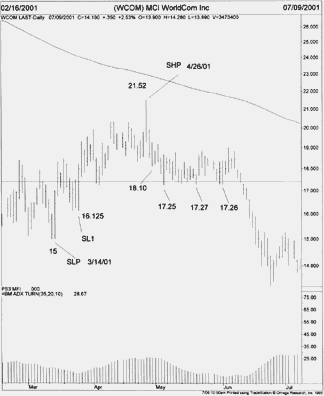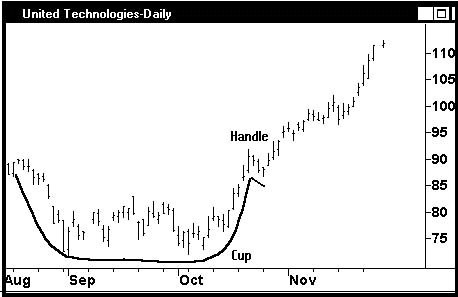CRB Trader Archive
Post on: 5 Апрель, 2015 No Comment

— 2000: Volume 9, No. 1
What It Takes to be A Successful Day Trader
By Robert Deel
The grim reality is short-term trading and especially day trading can be hazardous to your wealth. Ninety-two percent of day traders trying to scalp loose money. Only eight percent are successful. Out of the eight percent, only two percent of the day trading public make money on a consistent basis. Why do 92 percent of day traders fail and what makes eight percent successful? Let’s take an honest look at day trading without the hype and emotion that surrounds the subject and find out what it takes to be a successful day trader.
We go to school, gain an education, become employed, or start our own business. We learn what we need to know to be successful, but nothing in our education or work experience provides the comprehensive knowledge or psychological control necessary for success as a trader. Unfortunately, it’s human nature to assume that if we succeed in one area we will automatically succeed in another. Most people who enter the market with the idea of becoming traders have a feeling of invincibility, superiority, and no clue of what they are about to experience. The dream of quick money and financial success can very quickly become a living nightmare. The first step in becoming a successful trader is to understand why so many day traders fail. Answer the following questions:
- Would you buy a business if you had no idea what the cash flow would be?
- Would you buy a business if you had little actual experience or training compared to your competition?
- Would you go into a business where your competition was well capitalized and you had limited capital?
- Would you buy a business without a business plan?
If you’re saying, Not a chance, guess again. That is exactly what you are doing when you start trading for the first time. You must prepare yourself and realize that you are going to be up against the best traders in the world. Training, experience, psychological control, and a realization that your are not invincible or smarter than the market will lead you to success. Wall Street is paved with the bones of those who did not learn this lesson until it was too late.
Most new traders have the wrong focus. If money is your focus, you have little chance of success. Many new traders look at trading as a way to escape a job they hate. They know they have to make a certain amount of money to pay the bills and this becomes a psychological guillotine. When the trader fails to meet the goal, he begins to push trading beyond his true ability and skill. The result is a series of losing trades that could have been avoided if the trader had the correct focus. Your focus and the measure of your success should be based on following the trading plan, not money. If you follow the plan each day, you are a winner. If the focus is money, it leads to emotional decisions and emotional decisions lead to uncontrolled losses. Successful traders make decisions based on fact and analysis. Do this and money will follow if your methodology is a sound one.
The Mathematics Of Trading
Almost everyone has heard the term cut your losses. Nowhere is this lesson more evident than in day trading. Statistics tell us that most new day traders lose over $21,000 dollars in their first three months of trading. If they use leverage the average loss rises to more than $45,000. Nothing supports the reasoning for not overtrading and cutting a loss more than an understanding of the mathematics of what it takes to recover from a previous losing trade. If you were down 15 percent, you would need to make 17.6 percent in the next trade to breakeven. This does not cover slippage or commissions so in reality you would have to do far better than 17.6 percent. Now, imagine making 30 trades a day and most of them losses. It has been my experience that it is extremely difficult to recover from any loss of capital above 25 percent for most traders. This is because it takes 33.33 percent to recover in the next trade. If a trader has allowed the trade to lose 25 percent they simply are not managing the risk. I have known traders to have 10 winning trades and lose it all by not managing the risk on two trades. The successful trader is ruthless about cutting a loss because they understand the mathematical relationship of trading. I have been in this business for a very long time and if I have learned one lesson it is this-once you enter a trade you are no longer a trader you are a risk manager. Never forget this.
Not Every Day
One of the interesting observations I have made over the years about day traders is that they have great difficulty not trading. Who ever said every day was a trading day was wrong. Only make trades that have a high probability of working out. This means that successful day traders make fewer trades and do not trade everyday. Look for strong trending market days and trade stocks that trend with that market.

Many day traders are addicted to the action and making money has little to do with their true reason for trading. These individuals are not traders, they are gamblers. Action addicts will lose as many times as necessary just for the adrenaline rush to win once. Most successful day traders make no more than three to five high probability trades per day. It has been my experience that if a trader makes over 18 trades a day, they are in all probability gamblers not traders. Successful day traders know that not everyday is a high probability trading day and overtrading can be hazardous to your wealth.
High Probability Screening
Most day trading cowboys will shoot at anything that moves. In most cases they walk into their trading room with no game plan other than to listen to the news and trade the momentary euphoric hype in the room. If this is your preparation for battle, your days are numbered and the following might appear on your head stone: Here lies the bones of a day trading master. He was fast on the mouse but somebody was faster.
Screening for high probability profitability trades is of the utmost importance. We teach our students to quantify and select the three highest probability trades that have a reward-to-risk ratio of 2.5 or greater. The screening process looks for and selects the maximum momentum acceleration points on a given security. Out of a database of 500 stocks, our traders select the three highest probability profitability trades for the following day. Ninety-eight percent of a traders success is due to the work done the night or day before the trade occurs. Success in day trading means a lot of work and very few people will do the work necessary. Losers are always looking for the easy way out. Success is directly proportional to the amount of work you will do that no one else will.
What Kind Of Day Trader Are You?
One of the keys to successful trading is to understand that you are an individual and as an individual you have strengths and weaknesses. One reason that day traders have such a high percentage of losses is that they are trained to use a standard one-size-fits-all approach. Unfortunately this approach is a day trading style known as scalping. A scalper trades for small fractions of a point-from 1/16 to 1/8. This style of trading has a 92 percent failure rate. Most people do not have the psychological control or ability to successfully trade with this strategy. Another strategy known as intraday trend trading has a much better success rate. The intraday trend trader will stay in a trade until the trend reverses. This could take a few minutes or several hours. This style of day trading makes time your friend and enables you to trade for points instead of fractions. The trend trader is far less likely to be whipsawed out of a trade because the focus is on staying with the trend. Notice that I did not say momentum. Momentum is usually associated with scalping too close to the axis of volatility. This volatility is usually displayed on a NASDAQ Level II screen. Years ago this information was very useful for traders. Today it is not as important as it once was and in fact, professional traders use the day traders own out-of-date information about the Level II screen to lure scalpers to their doom. If you are trend trading intraday, Level II has less importance and your chance for success is far greater. Traders trading this style tend to trade much less and statistically have a more successful outcome. Successful traders identify what type of trader they are and do not try to trade a methodology that does not fit their personality.
What It Takes To Be A Successful Day Trader
A consistently successful day trader knows his or her success in not found in the box (computer software or hardware). Many times traders look for the answers in technology and it is not there. They blame technology for failure so their answer is to buy more technology. The answer is understanding and controlling your own emotion and taking responsibility for your own actions and making decisions based on analysis. If you are wrong, you do not personalize the loss, you just say next. Successful traders know that losing is part of the cost of doing business. Great day traders know that you will never learn how to win until you first learn how to lose. How a trader psychologically handles loss many times determines success or failure. Success in day trading is most of all a mastery of one’s self. This is not the get rich quick easy road to riches that some people think it is. It requires a commitment of time, money, and a willingness to work very hard.
Desire and working hard is not enough. You are going to need working capital. This is like any other business it takes money to make money. I suggest you have a minimum of $50,000 to $100,000. Many novice traders attempt to trade without being properly capitalized. Once you have the capital and begin to trade, never forget once you enter a trade you are no longer a day trader. Instead you are a risk manager. Trade only high probability trades and remember, every day is not a high probability trading day.
Robert Deel is a trading strategist and author of Trading The Plan and The Strategic Electronic Day Trader to be released in February 2000. He is the president of TradingSchool.com an independent educational company. Tradingschool.com trains the day trader, short-term trader, and aggressive investors.
P.O. Box 1831
Duarte, CA 91010
Office: 626-963-2057
CRB TRADER is published bi-monthly by Commodity Research Bureau, 209 West Jackson Boulevard, 2nd Floor, Chicago, IL 60606. Copyright 1934 — 2002 CRB. All rights reserved. Reproduction in any manner, without consent is prohibited. CRB believes the information contained in articles appearing in CRB TRADER is reliable and every effort is made to assure accuracy. Publisher disclaims responsibility for facts and opinions contained herein.














